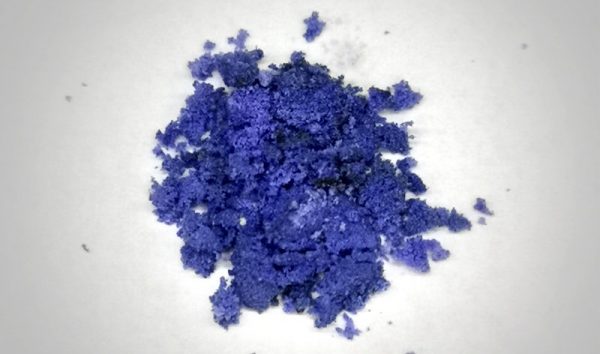 BeetBlue is a new pigment made from beets. (Erick Leite Bastos via The New York Times)
BeetBlue is a new pigment made from beets. (Erick Leite Bastos via The New York Times) Blue is the color of clear skies and open water. It conjures calm. But it’s not easy being blue. It’s not the easiest color to make, either.
You can make a nice blue by mixing certain minerals with elements like mercury or lead. But they are toxic. Other methods of producing blue dyes can also be harmful to humans and the environment.
What if there was another way to make things blue, using something that is usually red? That’s what an organic chemist in Brazil tried.
“I like to think I’m kind of a molecular psychiatrist,” said Erick Bastos, who studies the chemistry of natural pigments at Universidade de São Paulo. “I check the structure of a molecule, and I try to imagine what kind of modification I can do in order to make the molecule obey me. It doesn’t always happen. It’s very difficult.”
By extracting a pigment from beets and tweaking its molecular pattern, Bastos transformed the pigment’s bashful blush to a brilliant blue. He calls it BeetBlue, and so far it appears to be nontoxic. The chemical reaction he and his colleagues demonstrated April 3 in Science Advances brings us a natural blue, unpatented and free for all to modify.
Bastos became interested in making blue from beets because he had been working with betalains, rare pigments found in beet roots, dragon fruit and the fly agaric fungus (a typical red and white magic mushroom). Just a tiny amount of beetroot juice can render a lot of dye. It was natural and efficient.
Some of the most important advances in science — like the notion that individual neurons exist and communicate — came with the help of natural dyes, like silver golgi stain and green fluorescent protein. Inspired by the scientific heroes who discovered these, Bastos had originally intended to use BeetBlue for biomedical imaging.
But it didn’t work.
“I’m in the business of putting things inside the cell,” he said. “But BeetBlue is not good at doing this.”
He asked Barbara Freitas-Dörr, a graduate student he works with, to try using the dye for something else.
Much to his surprise, she returned after five minutes holding a tube of blue. After further processing, the pigment was scentless and felt like powdered sugar. It successfully dyed maltodextrin, a starchy food preservative, as well as yogurt, silk, cotton and samples of human hair.
Style on 04/13/2020
Print Headline: Safe blue dye is made from beetroot